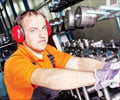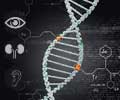The OHSU Tinnitus Clinic and the School of Dentistry is delving into the subject of high-speed dental tools and their relationship with hearing loss.
The OHSU Tinnitus Clinic and the School of Dentistry is delving into the subject of high-speed dental tools and their relationship with hearing loss. Apparently the relationship has not been understood very clearly. Robert Folmer, Ph.D., one of the study leaders, said"Over the years, we have seen dentists in the OHSU Tinnitus Clinic who were convinced that long-term exposure to sound from high-speed hand pieces contributed to their high-frequency hearing loss and tinnitus.These anecdotes, in combination with the research being divided about high-speed hand pieces playing a role in hearing loss, prompted our study. We hope the study is a good first step toward scientific evidence behind the anecdotes we've been hearing." Fulmer is associate professor of otolaryngology/head and neck surgery, School of Medicine, and chief of clinical services at the OHSU Tinnitus Clinic, Oregon Hearing Research Center.
Tinnitus, or ringing of the ears, can be constant or intermittent and can include buzzing, hissing or sizzling sounds. Many people experience momentary tinnitus, a high-pitched tone that lasts up to 30 seconds. Acute tinnitus, however, can last days or weeks and is most commonly caused by exposure to loud noise such as music at a rock concert, power tools or gunfire. The subsequent ringing indicates damage to the tiny hair-like structures within the inner ear and if exposure to loud noise continues, permanent hearing loss is likely.Most of the current high-speed hand pieces, such as high-speed drills and scalers used by dental professionals, are between 90 to 100 decibels, says Folmer. That's the equivalent of a gas lawnmower or other power tools, which are loud enough to cause hearing loss over time. And hand pieces have actually gotten "quieter" over the years with the advent of modern technologies. However, very few dental professionals or students interviewed for the study so far, wear earplugs to protect themselves from this noise.
None of the 54 dental schools nationally are known to require dental students to wear ear protection while treating patients.
School of Dentistry Dean Jack Clinton, D.M.D., welcomed Folmer's study. "Any research that can help us keep students healthy and safe is a top priority," said Clinton. "We hope just the fact that the study is being done will continue to help raise awareness within the dental school about the possible hearing loss from high-speed dental instruments so dental professionals can make good decisions as they go through their careers."
Folmer is conducting his research this summer with Clackamas High School senior April Kaelin, a student he is mentoring through Portland State University's Apprenticeships in Science and Engineering (ASE) program. Folmer and April are investigating noise-induced hearing loss by conducting hearing tests with a portable audiometer, examining ear canals with an otoscope and asking participants to answer questions about occupational and recreational noise exposure. They also have measured the sound levels of different hand pieces while they're used on patients.
"We want to compare the hearing tests of dentists, dental assistants, and dental hygienists to those of dental students and people of comparable age in other professions," said Folmer. "We also want to examine whether there's a correlation between hearing thresholds and the amount of time that dental professionals are exposed to loud devices at work. And if dental professionals exhibit evidence of noise-induced hearing loss, can it be correlated with occupational or recreational noise exposure? Our hypothesis is that if dental professionals utilize hearing protective devices, they will exhibit less noise-induced hearing loss than dental professionals who do not protect their ears."
Rita Patterson, D.M.D., an assistant professor of prosthodontics who introduces the hand pieces to first-year students, also is interested in the study. "We tell the students that they can wear earplugs, which are supplied to students as a standard part of their dental equipment. There are times during the course that I teach that we have 75 high-speed hand pieces running at the same time [there are 75 dental students] for more than two hours at a time. Many instructors, including myself, wonder if we have had some hearing loss from the exposure."











